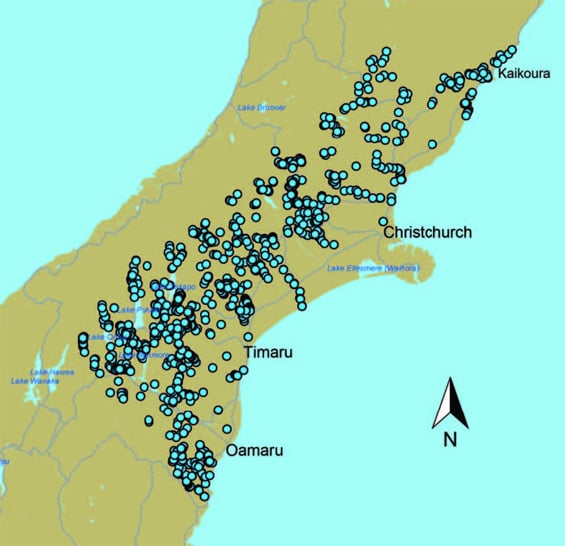Canterbury galaxias have a conservation status of ‘At Risk – Declining’.
They have mottled markings all over, and of NZ's non-migratory galaxiids, they have the least amount of metallic 'galaxy' dusting over their bodies.
Their body colourings can range from differing shades of grey to brown or olive.
Image gallery
Habitat
Canterbury galaxias (Galaxias vulgaris) can be found in streams and rivers draining the eastern side of the Southern Alps, all the way from the Clarence River in the North, to Trotters Gorge near Moeraki in the South.
They are often excluded from the main stem of rivers due to trout but can be found in the side-braids and tributaries.
Features
Features of Canterbury galaxias include:
- body colourings can range from differing shades of grey to brown or olive
- they have mottled markings all over, and of NZ’s non-migratory galaxiids, they have the least amount of metallic ‘galaxy’ dusting over their bodies
- their eyes appear quite large when viewed from above as they are slightly angled towards each other
- typically grow up to 100 mm in length but can get to 170 mm
- feed on small stream invertebrates such as mayflies and stoneflies
- spawn in spring (October to November) laying tiny 2 mm eggs in saucer-shaped depressions beneath large cobbles or boulders in fastflowing riffles.
Threats
Their main threats are habitat loss from land development and predation by trout and eels (although some larger river habitats have enough space for galaxiids and trout to co-exist).
Other threats include changes in land use, such as stock access to streams, reduction of native vegetation, and forest harvesting.
These changes in land use impact on the streams in which galaxiids live, increasing sedimentation, changing natural flows through water abstraction, and reducing habitat available for spawning.
Find out how you can help non-migratory galaxiids.
Distribution
This map shows the known locations of Canterbury galaxias, as at 2013.

Source: New Zealand freshwater fish database